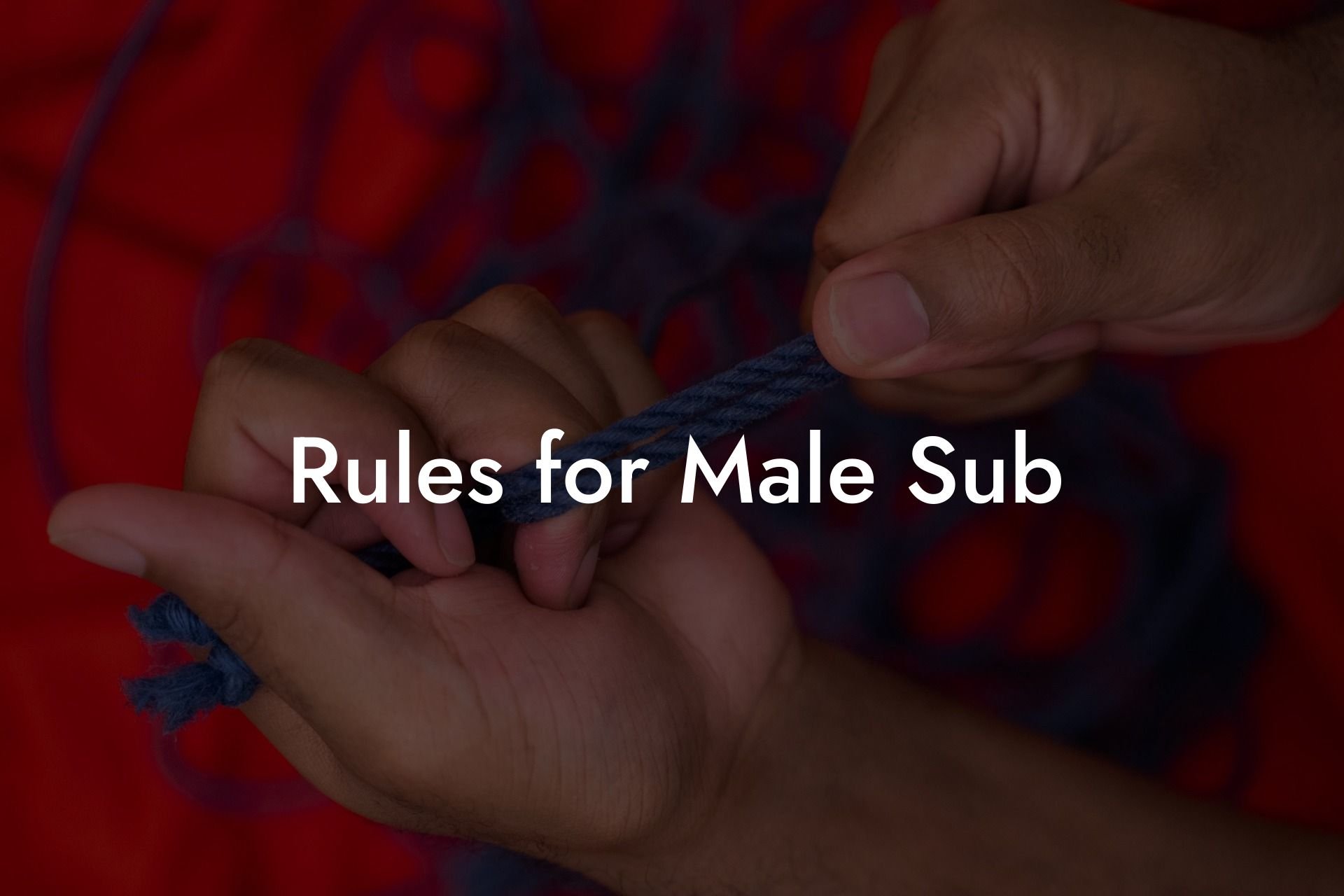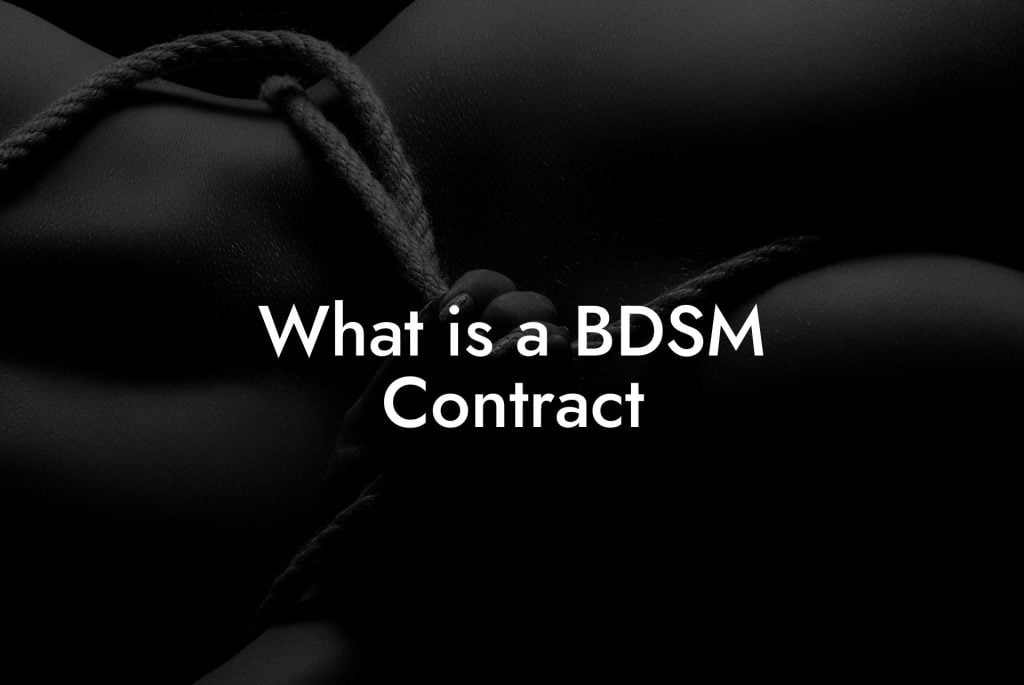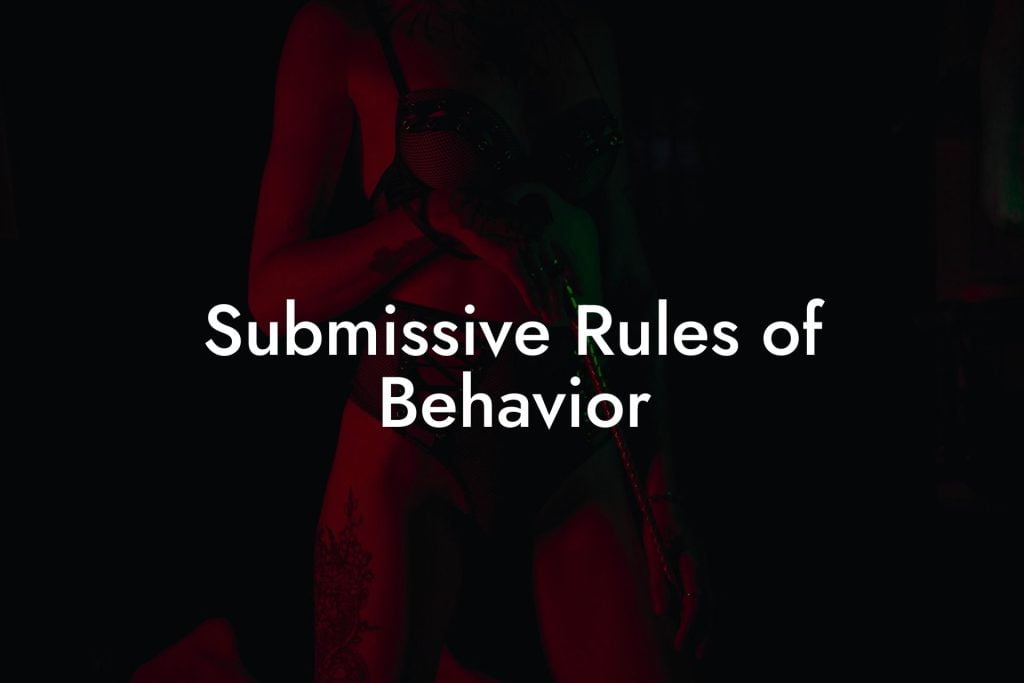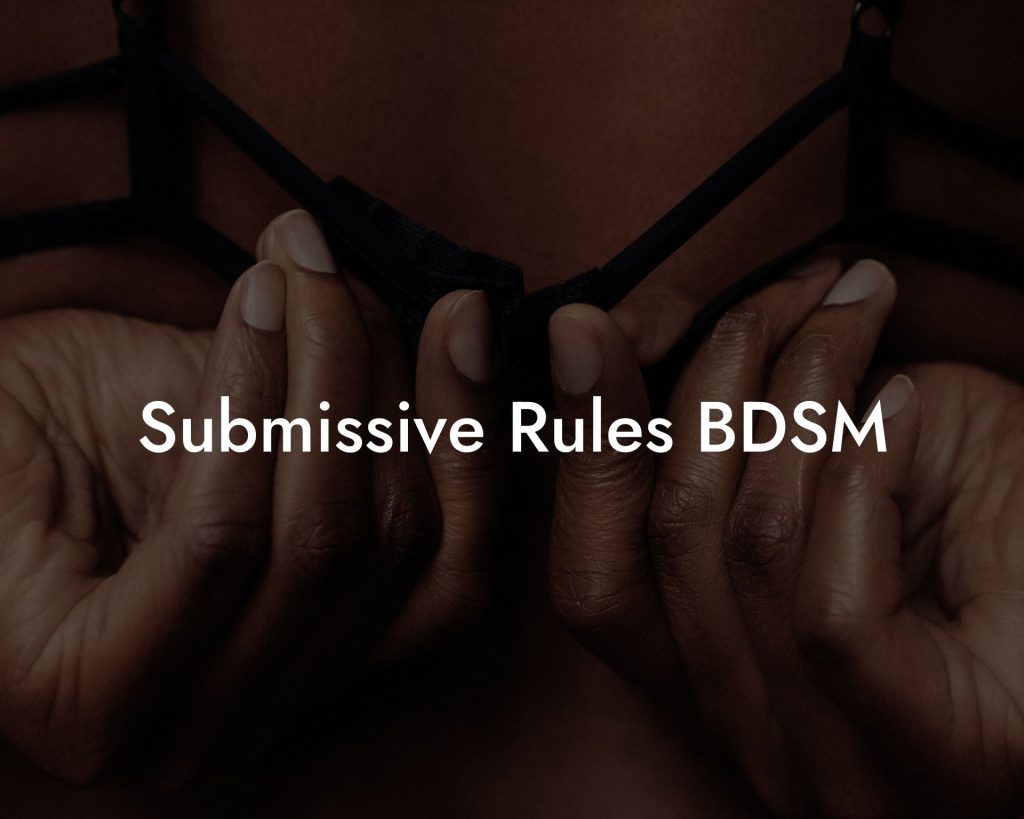Welcome to Filthy Adult's comprehensive guide on the rules for male submissives in the BDSM world. In this article, we will delve into the dynamics of power exchange, the essential guidelines for a healthy BDSM relationship, and how male submissives can please their Dominants while exploring their submissive journey. Whether you are new to the kink world or seeking to refine your understanding, we've got you covered.
In any BDSM relationship, consent is the cornerstone of trust and respect. It’s more than just saying “yes” or “no”—it’s about openly communicating your desires, limits, and expectations. But trust doesn’t end with a conversation—it’s built through ongoing, clear agreements. That’s where our Dominant & Submissive BDSM Contract Pack comes in. Find out more →
Understanding the Dynamics of Power Exchange
In the BDSM world, power exchange is a fundamental aspect of Domination and submission. Male submissives willingly surrender power to their Dominants, embracing a role of devotion and servitude. It is crucial for all parties involved to establish clear communication and consent, ensuring a safe and consensual experience. Here are some guidelines to consider:
Communication and Consent
Effective communication is the cornerstone of any healthy BDSM relationship. Male submissives should openly discuss their desires, limits, and expectations with their Dominants. Consent is non-negotiable and must always be enthusiastic, informed, and ongoing. Establishing safe words or signals is imperative to enable immediate withdrawal of consent if necessary.
Establishing Boundaries
Both Dominants and submissives must establish clear boundaries that respect each other's limits. Male submissives should communicate their hard limits, which are activities or scenarios they are unwilling to participate in, and soft limits, which are activities they may be open to but feel hesitant or uncertain about. Dominants must acknowledge and abide by these boundaries.
Submissive Etiquette and Respect
Male submissives play an essential role in creating a fulfilling BDSM dynamic. Respect towards Dominants is paramount. It is vital to address the Dominant respectfully, using appropriate titles and honorifics agreed upon between both parties. Submissive etiquettes such as maintaining eye contact, listening attentively, and following instructions promptly are also vital for enhancing the power exchange experience.
Looking for the best BDSM & Kink OnlyFans content creators? Here is a list of 10 of our favourites:
- Best Cosplay OnlyFans - 🐱 Little Kitty Kate 👉👌 >> Link
- Best Little OnlyFans - 🧸 Katya 🙇♀️ Sun >> Link
- Best Sub OnlyFans - 🍌Hanna Banana🍌 >> Link
- Best Teen & Huge Tits OnlyFans - ❣️Anny❣️19 y.o. BUSTY student girl >> Link
- Best Tiny Tits OnlyFans - ⍣⭐️ Sofia Parker ⭐️⍣ >> Link
- Best Sub & Huge Boobs OnlyFans - Nika Huge Boobs >> Link
- Best Kink OnlyFans - Julia Pearl🐚 >> Link
- Best Fetish & Girl Next Door OnlyFans - Hillary is Wet 💦 >> Link
- Best Dirty Latina OnlyFans - Paula Flores 😈 >> Link
- Best BBW & Huge Ass OnlyFans - Naughty Hanna Zimmer 💜🎀 >> Link
Not quite what you are looking for? View the full list →
Rituals and Protocols
Many BDSM relationships incorporate rituals and protocols to reinforce the power dynamic and enhance the submissive experience. These can range from daily tasks assigned by the Dominant to formalized routines during scenes. Male submissives should embrace and fulfill these rituals as acts of service, devotion, and submission.
Frequently Asked Questions
What exactly is a BDSM Contract?
A BDSM contract is a document that outlines the boundaries, expectations, rules, and roles of the parties involved in a BDSM relationship. The purpose of the contract is to ensure clear communication and consent between the participants, establishing trust and understanding before engaging in BDSM activities.
Is a BDSM Contract legally binding?
While a BDSM contract may be a formal agreement between parties, it is generally not recognized as a legally binding document in most jurisdictions. It is meant more as a symbolic agreement that helps guide the relationship rather than something enforceable by law.
Why are trust and safety so important in a BDSM relationship?
Trust and safety are paramount in BDSM relationships because the activities involved can entail physical and psychological risks. Trust ensures that partners respect each other's boundaries and communicate openly, while safety measures protect against potential harm.
What are safe words and why are they important?
Safe words are pre-determined words or signals used by participants in a BDSM scene to communicate their discomfort or need to slow down or stop the activity. They are crucial for maintaining the safety and consent of all parties involved.
How should one approach consent in a BDSM context?
Consent in BDSM should be explicit, informed, and enthusiastic. All parties should discuss and agree upon activities ahead of time, and consent should be an ongoing conversation, as it can be withdrawn at any time.
What does BDSM stand for?
BDSM is an acronym that stands for Bondage and Discipline (BD), Dominance and Submission (DS), and Sadism and Masochism (SM). It encompasses a wide range of activities and dynamics within a consensual power exchange relationship.
Can anyone try BDSM, or is it only for certain people?
BDSM can be explored by any consenting adults who are interested in the practice. There are no specific requirements or attributes needed, but it's essential to approach BDSM with an open mind, clear communication, and respect for boundaries.
How do you start a conversation about introducing BDSM into a relationship?
Starting a conversation about BDSM involves open and honest communication. It's important to express your interests calmly, to listen to your partner's thoughts and feelings, and to approach the subject with sensitivity and without pressure.
Are BDSM activities always sexual?
Not all BDSM activities are sexual in nature. Some individuals enjoy the power exchange or the physical sensations without including sexual acts. BDSM can be a purely psychological and emotional experience for some.
How can a beginner learn more about BDSM?
Beginners interested in BDSM can learn more by reading books and articles on the subject, joining online forums or communities, attending workshops, and talking to experienced practitioners.
What is a power dynamic in BDSM?
A power dynamic in BDSM refers to the negotiated and consensual exchange of power between a dominant partner, who takes control, and a submissive partner, who gives up control, during a scene or throughout their relationship.
Are there any risks associated with BDSM?
Like any physical activity, BDSM involves some risks, including potential injury or emotional distress. Parties involved should be knowledgeable about the activities they are engaging in, communicate clearly, and take precautions to minimize these risks.
How do I find a BDSM community?
Finding a BDSM community can be done through online platforms, social media, specialized dating sites, or by attending local events and workshops dedicated to BDSM practices.
What is aftercare, and why is it important?
Aftercare is the practice of attending to one another's physical and emotional needs after a BDSM scene. It is crucial for transitioning back to reality, reassures emotional safety, and strengthens the bond between participants.
Can someone be both dominant and submissive?
Yes, someone can identify as a "switch," which means they enjoy taking on both dominant and submissive roles, depending on their mood, their partner, or the specific scenario.
What kind of activities can be included in a BDSM scene?
BDSM scenes can involve a vast array of activities, from bondage and spanking to sensory deprivation and role-playing. The specific activities are based on the interests and limits of the participants.
Can BDSM help improve a relationship?
For some couples, incorporating BDSM can enhance intimacy and communication, leading to an improved relationship. However, it's essential that both parties are fully interested and consent to the incorporation of BDSM elements.
How do you negotiate boundaries in BDSM?
Boundaries in BDSM are negotiated through frank discussions about one's desires, limits, and expectations. These conversations should occur before entering into a scene and be revisited regularly.
What should I do if a BDSM scene goes wrong?
If a BDSM scene goes wrong, it's important to stop the activity immediately, address any immediate safety or medical concerns, and communicate openly about what happened. Participants should learn from the experience and take steps to prevent future issues.
Are there professional BDSM practitioners?
Yes, there are professional BDSM practitioners or 'Pro-Dommes/Pro-Doms' who provide services for those interested in exploring BDSM with an experienced individual. Professionals should always be properly vetted, and all activities should occur with explicit consent.
How important is privacy and discretion in BDSM?
Privacy and discretion are extremely important in BDSM due to the personal nature of the activities and the potential for societal stigma. Respect for one's privacy is a fundamental part of consent and trust in the BDSM community.
Discovering and embracing the rules for male submissives is an empowering journey. At Filthy Adult, we are passionate about providing informative and engaging resources to support your exploration of the BDSM and kink world. If you found this article helpful, we encourage you to share it with others who may benefit from it. Don't forget to explore our Ultimate BDSM Contract Pack, read our other engaging guides, and browse our fetish shop for exciting products that can enrich your submissive experience. Embrace your desires with Filthy Adult – your trusted source for all things BDSM and kink.













